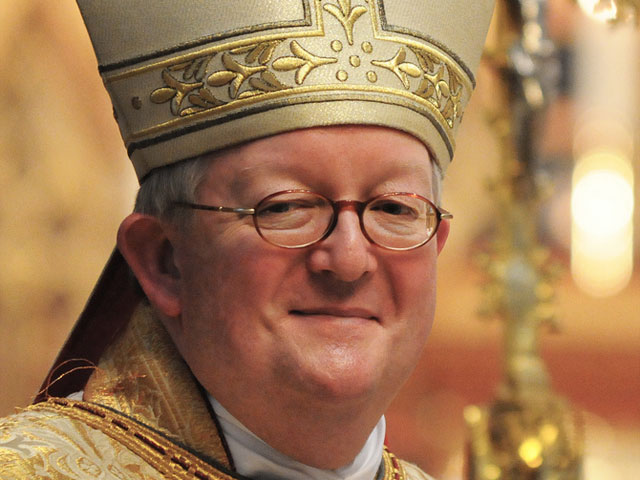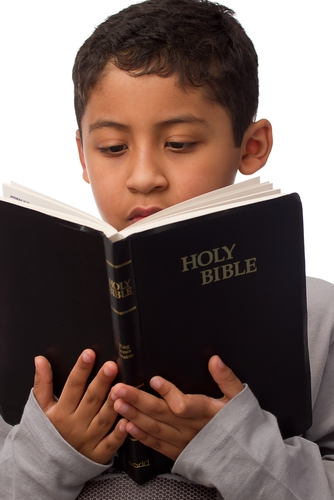There was an important interfaith gathering the other day in Los Angeles that allowed some highly symbolic religious leaders to make a faith-based appeal for immigration reform. As you would expect, The Los Angeles Times produced a short news story that focused on the basic facts.
The double-decker headline pronounced:
Local religious leaders unite for change in immigration law
Christian, Jewish and Muslim leaders in Southern California hold vigil calling for a revamp in federal immigration laws.
As noted in the lede, the service attracted several of “Southern California’s most prominent religious leaders,” led by the local Catholic archbishop. The presence of a Catholic leader was par for the course, especially in this case:
Immigrants who are in the United States illegally “need mercy and they need justice,” said Archbishop Jose Gomez, welcoming an array of Christian, Jewish and Muslim leaders to the gathering at the Cathedral of Our Lady of the Angels.
Gomez, who has made changing immigration laws a hallmark of his three-year tenure leading the L.A. Archdiocese, described the current system as “totally broken,” adding that federal laws punished families and children unfairly.
“These are human souls, not statistics,” the archbishop said. “These are children of God. We cannot be indifferent to their suffering.”
I appreciated the fact that the Times team candidly reported that hardly anyone was in the cathedral’s pews during this event. The actual phrase was “only a few dozen in attendance.”
The story also noted that it was important that leaders from “each of the three main Abrahamic traditions” were in attendance, instead the usually rally for Christians, alone. That is certainly a newsworthy point.
So what is missing in this short report?
Read the following material from the story quite closely and tell me who is missing. What is the major hole in this coalition, especially if the goal is to make a faith-based case for immigration reform in the context of modern-day Southern California and the lands to the South of the United States?
Among the other speakers were Episcopalian Bishop Jon Bruno, president of the L.A. Council of Religious Leaders, which put on the event; Methodist Bishop Minerva Carcano; Lutheran Bishop Guy Erwin; Armenian Church Archbishop Hovnan Derderian; and Rabbi Mark Diamond, regional director of the American Jewish Committee.
Diamond connected the immigration issue to the observance later this month of Passover, which commemorates the liberation of the Jewish people from slavery in Egypt. “Our ancestors knew the pain, the anguish of being unwelcome strangers in a strange land,” Diamond said. “We must never do that to others.”
Actually, Bruno is the Episcopal bishop in Los Angeles, since “Episcopal” is the adjective form of this word and “Episcopalian” is the noun (it’s in the Associated Press Stylebook). But I digress.
Notice that all of the Protestants present — at least the ones listed by the Times, and in the press release (.pdf) or the event — are from politically liberal bodies that would be natural allies for immigration reform, as framed by this White House. Erwin, for example, is the first openly gay bishop in the liberal Evangelical Lutheran Church in America.
I would imagine that the leaders of the Los Angeles Times would understand that, for a rally of this kind of represent the most powerful segments of the local religious community, it would need to include leaders from the region’s thriving, if not booming, Latino Pentecostal and evangelical megachurches — which are famous around the world. If would also be interesting to note what the leaders of these congregations, and their followers, think about the hot-button subject of immigration reform.
After all, it’s impossible to talk about Latinos and faith without talking about the remarkable rise of Pentecostalism in these cultures that were once completely dominated by Catholicism. Click here for the headline-producing 2006 report on this phenomenon by researchers at the Pew Forum on Religion & Public Life.
So, yes, it was very important that the service was led by Gomez. And it wasn’t surprising that Bruno and Erwin where there. But here is the big question: Where was Pastor Rene Molina of Restauracion Los Angeles, a thriving church that is attracting thousands of converts to Pentecostalism? Where are the leaders of local Latino Southern Baptist flocks? It would be important to know if those churches could influence America’s largest non-Catholic flock on this issue.
The bottom line: Were the growing elements of the local Protestant scene present? The Pentecostal gap is especially important.
To learn more about Molina and rising tide of Latino Pentecostalism that he symbolizes, click here to read a recent news feature on this work and his flock. It’s a major story from, well, The Los Angeles Times.











